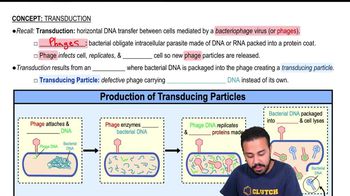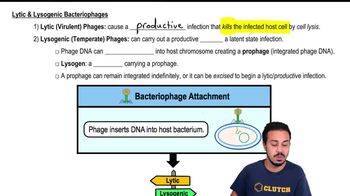Textbook Question
Normally a commensal in the human intestine, this bacterium became pathogenic after acquiring a toxin gene from a Shigella bacterium.
114
views
 Verified step by step guidance
Verified step by step guidance



Normally a commensal in the human intestine, this bacterium became pathogenic after acquiring a toxin gene from a Shigella bacterium.
Which of the following is not a method of horizontal gene transfer?
a. binary fission
b. conjugation
c. integration of a transposon
d. transduction
e. transformation
Match the following terms to the definitions in questions 1 and 2.
a. conjugation
b. transcription
c. transduction
d. transformation
e. translation
Transfer of DNA from a donor to a recipient as naked DNA in solution.
Bacteria can acquire antibiotic resistance by all of the following except
a. mutation.
b. insertion of transposons.
c. conjugation.
d. snRNPs.
e. transformation.